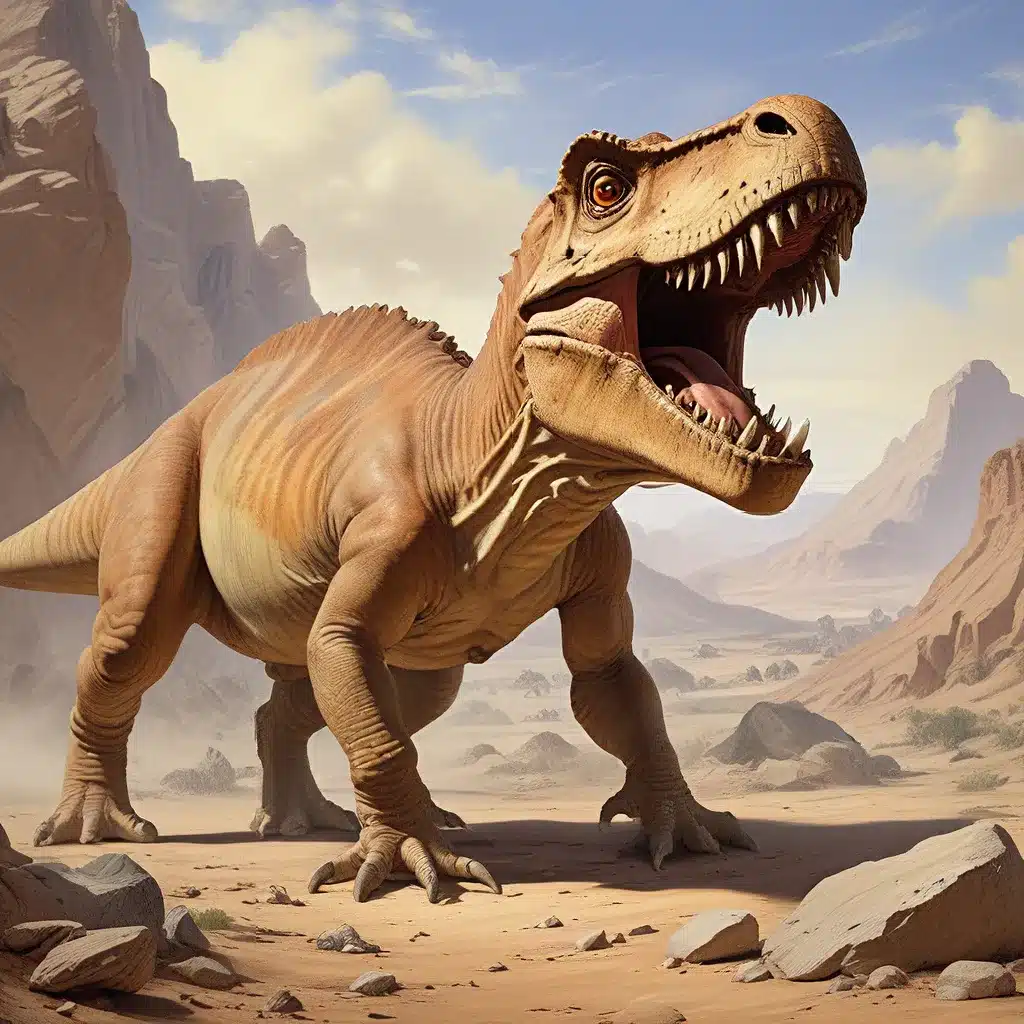
In the ever-evolving landscape of ancient history and archaeology, few fields have captivated the public imagination like the study of dinosaurs. These prehistoric giants, which once roamed the Earth for over 160 million years, continue to fascinate us, inspiring everything from scientific research to popular culture. At the heart of this enduring fascination are the pioneering paleontologists, the intrepid explorers who have dedicated their lives to uncovering the secrets of these awe-inspiring creatures.
The Bone Wars: A Clash of Titans
One of the most iconic and dramatic chapters in the history of dinosaur research is the Bone Wars, a fierce rivalry that erupted in the late 19th century between two prominent paleontologists, Edward Drinker Cope and Othniel Charles Marsh. These two titans of the field engaged in a ruthless competition to unearth and claim the most significant dinosaur fossils, often resorting to underhanded tactics and even espionage to gain the upper hand.
The Bone Wars centered around the Haddonfield area in Camden County, New Jersey, where both Cope and Marsh conducted extensive excavations. This region, rich in prehistoric remains, became the battleground for their fierce academic and personal feud. The two paleontologists vied to be the first to discover and describe new species, often racing against each other to claim the most impressive finds.
Their intense rivalry led to numerous discoveries, including the unearthing of the Hadrosaurus, one of the most well-known herbivorous dinosaurs of the late Cretaceous period. However, the Bone Wars also saw the two men engage in a series of underhanded tactics, such as stealing fossils, sabotaging each other’s excavations, and even publishing false or misleading information to discredit their rival’s findings.
Despite the drama and controversy surrounding the Bone Wars, the contributions of Cope and Marsh to the field of paleontology are undeniable. Their fierce competition and unwavering dedication to the pursuit of knowledge ultimately advanced our understanding of dinosaur evolution and the Mesozoic era, paving the way for future generations of scientists to build upon their groundbreaking work.
The Paleontological Pioneers
While the Bone Wars may be the most well-known chapter in the history of dinosaur research, there are many other pioneering paleontologists whose contributions have been equally significant in shaping our understanding of these ancient creatures.
One such figure is Mary Anning, a self-taught fossil collector who lived in the early 19th century. Despite facing numerous challenges as a woman in a male-dominated field, Anning made a series of remarkable discoveries, including the first complete ichthyosaur and plesiosaur fossils, which helped establish the existence of extinct marine reptiles.
Another influential paleontologist was Barnum Brown, known as the “Dinosaur King” for his prolific excavations and discoveries. Brown’s expeditions in the American West yielded numerous Tyrannosaurus rex and Triceratops fossils, which helped cement these iconic dinosaurs as two of the most recognizable and studied species.
The contributions of these pioneers are not limited to the physical fossils they uncovered, but also in the insights they provided into the lives and behaviors of these ancient creatures. Through meticulous observation, careful analysis, and a deep understanding of the geological and paleontological record, these paleontologists were able to reconstruct the world of the dinosaurs, shedding light on their habitats, feeding patterns, and even their social interactions.
Emerging Theories and New Discoveries
As the field of paleontology has continued to evolve, so too have the theories and understandings surrounding the extinction of the dinosaurs. While the impact of a massive asteroid striking the Earth remains the most widely accepted explanation for the Cretaceous-Paleogene extinction event, some scientists have proposed alternative theories that challenge this long-held belief.
One such theory, known as the Deccan Traps hypothesis, suggests that a series of volcanic eruptions in what is now India may have played a significant role in the demise of the dinosaurs. These massive eruptions, which occurred around the same time as the asteroid impact, may have released vast amounts of greenhouse gases into the atmosphere, leading to dramatic climate changes that ultimately proved fatal for the dinosaurs.
As our understanding of the past continues to evolve, new discoveries and advancements in technology have also allowed paleontologists to uncover previously unknown aspects of dinosaur biology and behavior. For example, the recent discovery of feathered dinosaur fossils has challenged the long-held belief that these prehistoric giants were strictly scaly reptiles, suggesting a more complex evolutionary relationship between dinosaurs and modern birds.
Moreover, the use of advanced imaging techniques, such as CT scans and 3D modeling, has enabled researchers to gain unprecedented insights into the internal anatomy and physiology of dinosaurs, providing a deeper understanding of their growth, development, and adaptations to their environments.
Preserving the Past, Inspiring the Future
As we continue to uncover the secrets of the dinosaur age, the work of these pioneering paleontologists serves as a testament to the power of human curiosity and the relentless pursuit of knowledge. Their legacies have inspired generations of scientists, fueling a deep fascination with the natural world and the mysteries that lie buried beneath the surface of our planet.
Today, the legacy of these prehistoric prodigies lives on through the countless museums, research institutions, and educational programs dedicated to the study of dinosaurs and ancient life. From the halls of the American Museum of Natural History to the Jurassic World theme parks, the enduring allure of these prehistoric giants continues to captivate and inspire people around the world.
As we look to the future, the work of these pioneering paleontologists serves as a reminder of the transformative power of scientific exploration and the importance of preserving our natural and cultural heritage. By continuing to uncover the secrets of the past, we not only deepen our understanding of the world we live in but also inspire the next generation of scientists, explorers, and dreamers to push the boundaries of what is possible.


